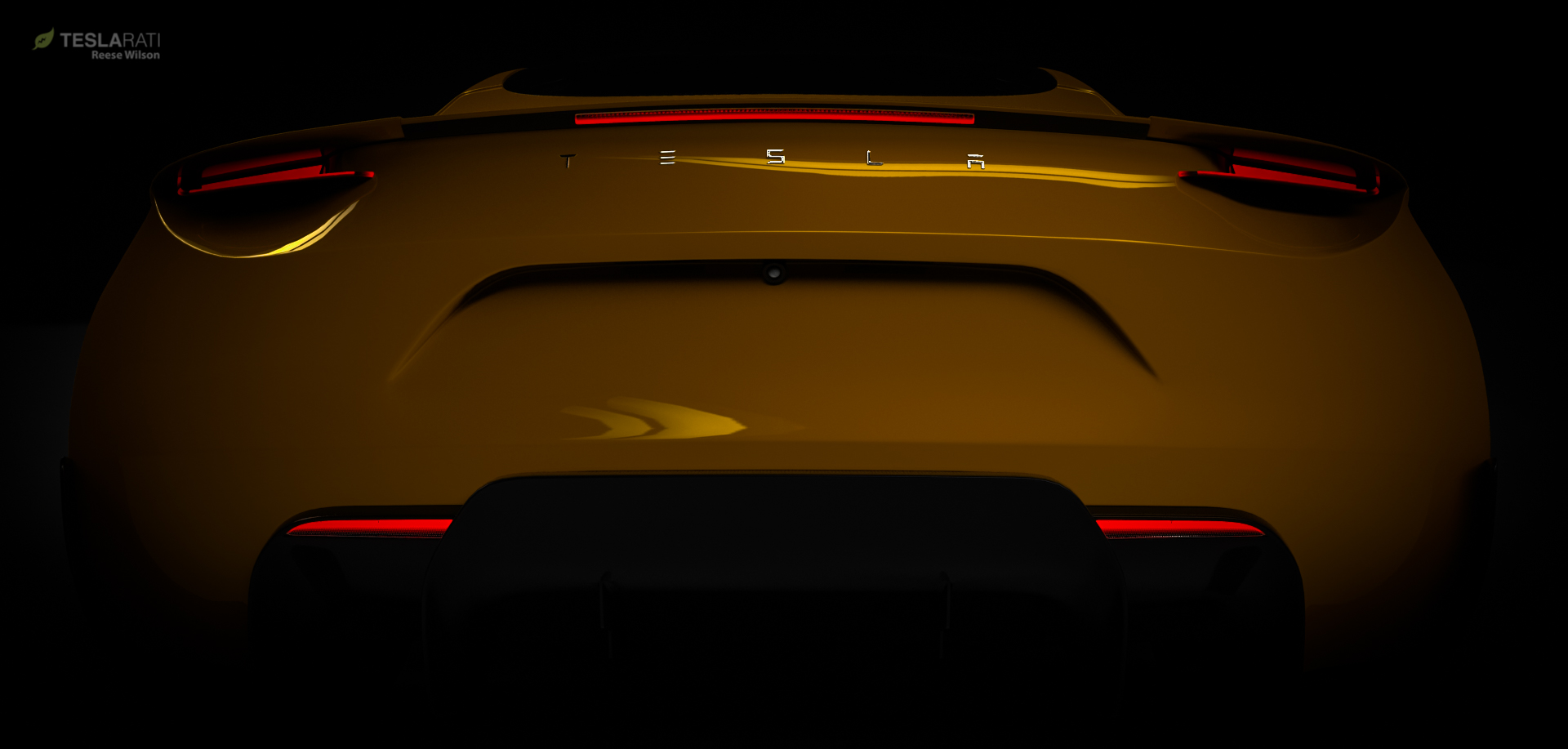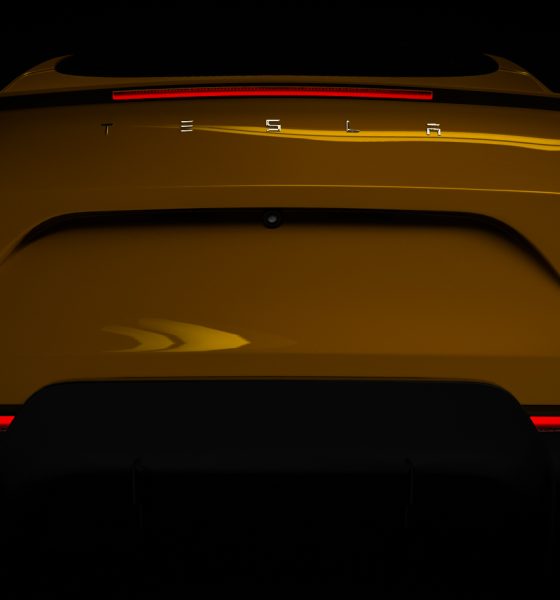

News
Tesla’s next-gen Roadster would likely have ‘Track Mode’ refined by the Model 3 Performance
The next-generation Roadster is set to become the golden standard of Tesla’s electric cars. The all-electric supercar is the very definition of a “Halo Car,” a vehicle designed to showcase the full capabilities of the automaker. The next-gen Roadster’s specs are practically unheard of, such as its 0-60 mph time of 1.9 seconds, its sub-9-second quarter-mile time, its top speed of over 250 mph, and its 200 kWh battery that gives a range of 620 miles per charge.
Being Tesla’s halo car, the next-gen Roadster would likely annihilate any competition on the quarter-mile. Vehicles such as the Model S P100D and the Model X P100D, after all, are known for besting gas-powered supercars on drag races, and those are essentially family cars that just happen to be really quick. That said, inasmuch as the straight-line performance of the next-gen Roadster is all but assured, the vehicle’s capability to handle the demands of track driving are still up for question. Fortunately, Tesla appears to have addressed this through a feature found in the Model 3 Performance — Track Mode.

The Model 3 Performance is so far the only vehicle in Tesla’s lineup that has Track Mode. In a statement to Road and Track, Michael Neumeyer, Tesla’s Manager of Chassis Controls, stated that the Model 3 Performance’s Track Mode is not like similar features found in other vehicles, since “(Tesla’s) Track Mode doesn’t disable features, it adds them.” Elon Musk also provided more details about the feature in a recent interview with popular YouTube tech reviewer Marques Brownlee, where he described the feature as an “Expert User Mode” for drivers.
“Track Mode will open up a lot of settings. You can adjust settings, and it’s kinda like an ‘Expert User Mode.’ You can sort of adjust traction control, adjust battery temperature. You can basically configure a bunch of things, and it will tell you, like ‘Hey, you know if you do this, it’s a bit risky. You’re gonna wear out your brakes sooner; you might blow a circuit.’ But like, it’ll be clear — like, you know, this is the risk you’re taking. It’s kinda like if you have a graphics card in a computer. You can go in there and change the settings and you can overclock things,” Musk said.

From the perspective of the next-generation Roadster’s expected release in 2020, it appears that Tesla’s rollout of Track Mode in the Model 3 Performance is not just intended to give the electric sedan a considerable selling point — it also appears to be an excellent way for the company to gather data for the all-electric supercar’s own Track Mode (Track Mode V2, perhaps?). Considering that the Roadster is a halo vehicle, there is a very good chance that it would include the feature, and by the time the car gets released in 2020, Tesla would have probably refined Track Mode considerably based on data gathered from the Model 3 Performance. In a way, this makes the Model 3 Performance an even more compelling purchase today, considering that it might have a feature that would eventually be shared with the next-gen Roadster.
When the next-generation Roadster was unveiled last year, Elon Musk dubbed the vehicle as a “hardcore smackdown to gasoline-powered cars.” Later tweets from Elon Musk suggest that Tesla is actually looking to push even more boundaries for the next-gen Roadster. One of these is equipping a variant of the vehicle with actual rocket tech from SpaceX, which, according to Musk, should give the all-electric supercar notable boosts in speed and handling. Elon Musk also mentioned that the next-gen Roadster would be equipped with an “Augmented Mode” feature that will help drivers operate the vehicle.
For the next-generation Roadster to become a true halo car, it must prove its worth in both straight-line races and on the racetrack. If Tesla manages to tune the all-electric supercar to be robust enough to endure extended track driving, the next-gen Roadster could very well find itself beside other legendary halo cars in the automotive industry, such as the iconic Ford GT and the Ferrari F40.

Elon Musk
Elon Musk and Tesla AI Director share insights after empty driver seat Robotaxi rides
The executives’ unoccupied tests hint at the rapid progress of Tesla’s unsupervised Robotaxi efforts.

Tesla CEO Elon Musk and AI Director Ashok Elluswamy celebrated Christmas Eve by sharing personal experiences with Robotaxi vehicles that had no safety monitor or occupant in the driver’s seat. Musk described the system’s “perfect driving” around Austin, while Elluswamy posted video from the back seat, calling it “an amazing experience.”
The executives’ unoccupied tests hint at the rapid progress of Tesla’s unsupervised Robotaxi efforts.
Elon and Ashok’s firsthand Robotaxi insights
Prior to Musk and the Tesla AI Director’s posts, sightings of unmanned Teslas navigating public roads were widely shared on social media. One such vehicle was spotted in Austin, Texas, which Elon Musk acknowleged by stating that “Testing is underway with no occupants in the car.”
Based on his Christmas Eve post, Musk seemed to have tested an unmanned Tesla himself. “A Tesla with no safety monitor in the car and me sitting in the passenger seat took me all around Austin on Sunday with perfect driving,” Musk wrote in his post.
Elluswamy responded with a 2-minute video showing himself in the rear of an unmanned Tesla. The video featured the vehicle’s empty front seats, as well as its smooth handling through real-world traffic. He captioned his video with the words, “It’s an amazing experience!”
Towards Unsupervised operations
During an xAI Hackathon earlier this month, Elon Musk mentioned that Tesla owed be removing Safety Monitors from its Robotaxis in Austin in just three weeks. “Unsupervised is pretty much solved at this point. So there will be Tesla Robotaxis operating in Austin with no one in them. Not even anyone in the passenger seat in about three weeks,” he said. Musk echoed similar estimates at the 2025 Annual Shareholder Meeting and the Q3 2025 earnings call.
Considering the insights that were posted Musk and Elluswamy, it does appear that Tesla is working hard towards operating its Robotaxis with no safety monitors. This is quite impressive considering that the service was launched just earlier this year.
Elon Musk
Starlink passes 9 million active customers just weeks after hitting 8 million
The milestone highlights the accelerating growth of Starlink, which has now been adding over 20,000 new users per day.

SpaceX’s Starlink satellite internet service has continued its rapid global expansion, surpassing 9 million active customers just weeks after crossing the 8 million mark.
The milestone highlights the accelerating growth of Starlink, which has now been adding over 20,000 new users per day.
9 million customers
In a post on X, SpaceX stated that Starlink now serves over 9 million active users across 155 countries, territories, and markets. The company reached 8 million customers in early November, meaning it added roughly 1 million subscribers in under seven weeks, or about 21,275 new users on average per day.
“Starlink is connecting more than 9M active customers with high-speed internet across 155 countries, territories, and many other markets,” Starlink wrote in a post on its official X account. SpaceX President Gwynne Shotwell also celebrated the milestone on X. “A huge thank you to all of our customers and congrats to the Starlink team for such an incredible product,” she wrote.
That growth rate reflects both rising demand for broadband in underserved regions and Starlink’s expanding satellite constellation, which now includes more than 9,000 low-Earth-orbit satellites designed to deliver high-speed, low-latency internet worldwide.
Starlink’s momentum
Starlink’s momentum has been building up. SpaceX reported 4.6 million Starlink customers in December 2024, followed by 7 million by August 2025, and 8 million customers in November. Independent data also suggests Starlink usage is rising sharply, with Cloudflare reporting that global web traffic from Starlink users more than doubled in 2025, as noted in an Insider report.
Starlink’s momentum is increasingly tied to SpaceX’s broader financial outlook. Elon Musk has said the satellite network is “by far” the company’s largest revenue driver, and reports suggest SpaceX may be positioning itself for an initial public offering as soon as next year, with valuations estimated as high as $1.5 trillion. Musk has also suggested in the past that Starlink could have its own IPO in the future.
News
NVIDIA Director of Robotics: Tesla FSD v14 is the first AI to pass the “Physical Turing Test”
After testing FSD v14, Fan stated that his experience with FSD felt magical at first, but it soon started to feel like a routine.

NVIDIA Director of Robotics Jim Fan has praised Tesla’s Full Self-Driving (Supervised) v14 as the first AI to pass what he described as a “Physical Turing Test.”
After testing FSD v14, Fan stated that his experience with FSD felt magical at first, but it soon started to feel like a routine. And just like smartphones today, removing it now would “actively hurt.”
Jim Fan’s hands-on FSD v14 impressions
Fan, a leading researcher in embodied AI who is currently solving Physical AI at NVIDIA and spearheading the company’s Project GR00T initiative, noted that he actually was late to the Tesla game. He was, however, one of the first to try out FSD v14.
“I was very late to own a Tesla but among the earliest to try out FSD v14. It’s perhaps the first time I experience an AI that passes the Physical Turing Test: after a long day at work, you press a button, lay back, and couldn’t tell if a neural net or a human drove you home,” Fan wrote in a post on X.
Fan added: “Despite knowing exactly how robot learning works, I still find it magical watching the steering wheel turn by itself. First it feels surreal, next it becomes routine. Then, like the smartphone, taking it away actively hurts. This is how humanity gets rewired and glued to god-like technologies.”
The Physical Turing Test
The original Turing Test was conceived by Alan Turing in 1950, and it was aimed at determining if a machine could exhibit behavior that is equivalent to or indistinguishable from a human. By focusing on text-based conversations, the original Turing Test set a high bar for natural language processing and machine learning.
This test has been passed by today’s large language models. However, the capability to converse in a humanlike manner is a completely different challenge from performing real-world problem-solving or physical interactions. Thus, Fan introduced the Physical Turing Test, which challenges AI systems to demonstrate intelligence through physical actions.
Based on Fan’s comments, Tesla has demonstrated these intelligent physical actions with FSD v14. Elon Musk agreed with the NVIDIA executive, stating in a post on X that with FSD v14, “you can sense the sentience maturing.” Musk also praised Tesla AI, calling it the best “real-world AI” today.








